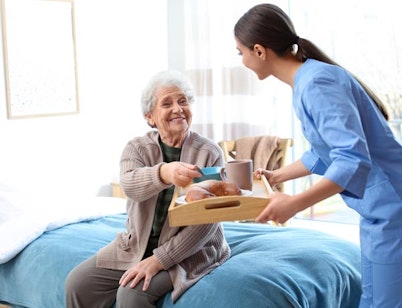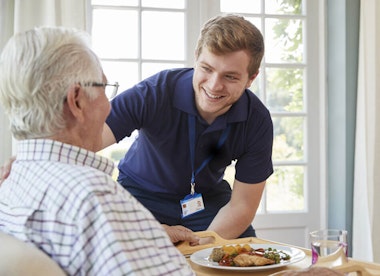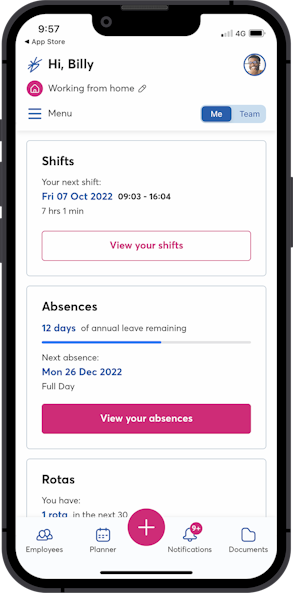24-hour Health & Safety advice
Enjoy unlimited peace of mind with round-the-clock access to insured Health & Safety advice.
Running a care home is no easy task.
Whether you're looking after residents, training care workers, or cooking food, there's a lot you have to manage. Not to mention, there are specific guidelines set out by the following UK care bodies that you need to follow, such as:
The Care Quality Commission (CQC) in England.
The Healthcare Inspectorate Wales (HIW) in Wales.
Scottish Care; and Standards set by the Health & Safety Executive.
Whilst compliance with key legislation is a must, it can be difficult to ensure the relevant Health & Safety standards are properly maintained. Which is why so many care providers turn to Peninsula for support.
From risk assessments and policy implementation, to care home Health & Safety audit assistance - we offer expert guidance on a range of topics.
So, whilst you take care of your patients, we'll take care of your Health & Safety.
It's your responsibility to keep your employees, patients, and any other visitors to your work premises safe at all times. Failure to do so means non-fatal injuries - and in severe circumstances, fatal injuries - might occur. As a result, you could face legal, financial and reputational damage.
Every care setting will face several potential Health & Safety risks. Hazards in a care home can include:
Bed rails and hoists.
Hot surfaces and hot water.
Outbreaks of food poisoning from meals prepared and other infectious diseases.
Hazardous substances.
Aggression from residents and family members.
To prevent the above from causing harm, you're legally required to perform a risk assessment. Risk assessments identify Health & Safety hazards - so you can establish what workplace activities or equipment may cause harm to anyone in your care home.
But, if you've never conducted a risk assessment before, where do you begin?
When you work with Peninsula, we help you do your workplace risk assessment in person, onsite, at a time that suits you. After your visit, you’ll receive a personalised action plan - which advises what control procedures you need to protect people from any Health & Safety risks present.
We'll even help with your fire risk assessment, too. So, you can be assured that you're doing everything you can to protect everyone in your care home from potential hazards.
According to the Health and Safety at Work Act, every business is required to provide a Health & Safety policy; a document that states how your business plans to manage Health & Safety in the workplace.
This must be shared with all your care assistants - so they're aware of the procedures you've put in place. But, creating watertight policies take time, and every minute spent on growing your business counts.
Peninsula’s team of Health & Safety consultants will craft all the policies you need - thanks to our documentation service. We'll help your workplace maintain robust safety procedures that protect everyone from harm, as well as ensuring your legal compliance.
It's just one of the many ways Peninsula takes the Health & Safety hassle off your shoulders.
Running a veterinary practice can be both stressful and fast-paced, which can lead to unexpected safety issues. But what should you do if the nightmare of an accident becomes a reality?
By choosing Peninsula to manage your Health & Safety, you're always in the best hands if the worst happens. And as part of your package, you have full access to our 24/7 365-day advice line.
So whether you need instant support on an issue, or just veterinary practice Health & Safety advice - we're here to help. Day or night, weekday or weekend, we can offer the guidance you need.
Tens of thousands of UK business owners reduce risk and worry with Peninsula support. Discover their stories below…
“Peninsula gives me confidence and clarity I’m applying employment law correctly in tricky situations. Having advice means that, when we go back to employees, our voice is more confident and it's easier to be consistent across the board with our managers”
Maria, Head of People
Pachamama Group
When Peninsula cares for your Health & Safety, you'll have the luxury of knowing all your requirements are being met.
Our Health & Safety teams offer assistance 24/7, 365 days a year - so no matter the problem, we're here to help.
Not to mention, with our documentation service - we ensure your policies are drafted perfectly. So you can be assured that your Health & Safety is safely managed.
Contact us today to find out more about the services we provide.
Peninsula’s software helps you meet the latest laws and protect your people. It’s everything you need to take the hassle out of all your essential Health & Safety tasks. And it’s included in your package as standard.
Got a question? Check whether we’ve already answered it for you…
We know we're following due process
Anything I send out, I always run by adviser, Samantha. It meant, from a legal and HR perspective, we knew we were following due process
When AI meets 40 years of Peninsula expertise... you get instant, expert answers to your HR and health & safety questions







